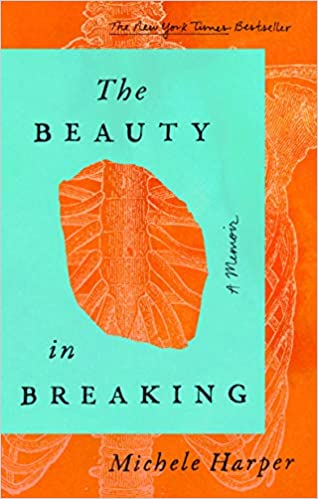Select newly added HSL titles. A full list of new titles can be found online.
The Beauty in Breaking: A Memoir, by Michele Harper.
“Michele Harper is a female, African American emergency room physician in a profession that is overwhelmingly male and white. Brought up in Washington, D.C., in a complicated family, she went to Harvard, where she met her husband. They stayed together through medical school until two months before she was scheduled to join the staff of a hospital in central Philadelphia, when he told her he couldn’t move with her. Her marriage at an end, Harper began her new life in a new city, in a new job, as a newly single woman. In the ensuing years, as Harper learned to become an effective ER physician, bringing insight and empathy to every patient encounter, she came to understand that each of us is broken–physically, emotionally, psychically. How we recognize those breaks, how we try to mend them, and where we go from there are all crucial parts of the healing process.” — Amazon.com |
Online |
One Blood: The Death and Resurrection of Charles R. Drew, by Spencie Love.
“One Blood traces both the life of the famous black surgeon and blood plasma pioneer Dr. Charles Drew and the well-known legend about his death. On April 1, 1950, Drew died after an auto accident in rural North Carolina. Within hours, rumors spread: the man who helped create the first American Red Cross blood bank had bled to death because a whites-only hospital refused to treat him. Drew was in fact treated in the emergency room of the small, segregated Alamance General Hospital. Two white surgeons worked hard to save him, but he died after about an hour. In her compelling chronicle of Drew’s life and death, Spencie Love shows that in a generic sense, the Drew legend is true: throughout the segregated era, African Americans were turned away at hospital doors, either because the hospitals were whites-only or because the ‘black beds’ were full. Love describes the fate of a young black World War II veteran who died after being turned away from Duke Hospital following an auto accident that occurred in the same year and the same county as Drew’s. African Americans are shown to have figuratively ‘bled to death’ at white hands from the time they were first brought to this country as slaves. By preserving their own stories, Love says, they have proven the enduring value of oral history. General Interest/Race Relations.” — Amazon.com |
Online |
Medical Professionalism Best Practices: Addressing Burnout and Resilience in Our Profession, edited by Richard L. Byyny, Richard Byyny, Sean Christensen, Jonathan D. Fish.
|
Online |
Health systems science: AMA Education Consortium, editors-in-chief, Susan E. Skochelak, Maya M. Hammoud, Kimberly D. Lomis.
|
W84 AA1 H43482 2021 |
A DIY Guide to Telemedicine for Clinicians, by S.B. Bhattacharyya.
“This book is a do-it-yourself guide for clinicians who wish to set up and run a telemedicine facility of their own. The contents are largely based on the understanding and experience gained by the author as a practising physician, management post-graduate (capstone thesis was on telemedicine) and as a business architect for digital health systems over more than thirty years. Full of management techniques, tricks and tips written in an easy-to-follow manner, this book provides sufficient information to clinicians looking to leverage telemedicine to augment their range of service offerings that would lead to increased levels of patient satisfaction. Various aspects related to definitions, technology, infrastructure, methodologies and legal issues for setting up and running telemedicine services have been dealt with to sufficient depths for the readers to help grasp the issues involved. Sections on privacy, confidentiality and data integrity have been provided to help allay the many concerns the readers might have in those regards. Additionally, financial evaluations based on realistic-enough figures have been used to demonstrate that telemedicine is a viable option financially.” — Amazon.com |
Online |


![One Blood: The Death and Resurrection of Charles R. Drew by [Spencie Love]](https://m.media-amazon.com/images/I/41TNaLYnAHL.jpg)
 Outcomes of Alpha Omega Alpha’s 2019 Professionalism Conference, including presentations. The hope of the book is to “aid practitioners, medical schools, professional organizations, and all involved in health care to better care for themselves, and contemporaneously their patients.”
Outcomes of Alpha Omega Alpha’s 2019 Professionalism Conference, including presentations. The hope of the book is to “aid practitioners, medical schools, professional organizations, and all involved in health care to better care for themselves, and contemporaneously their patients.” 
